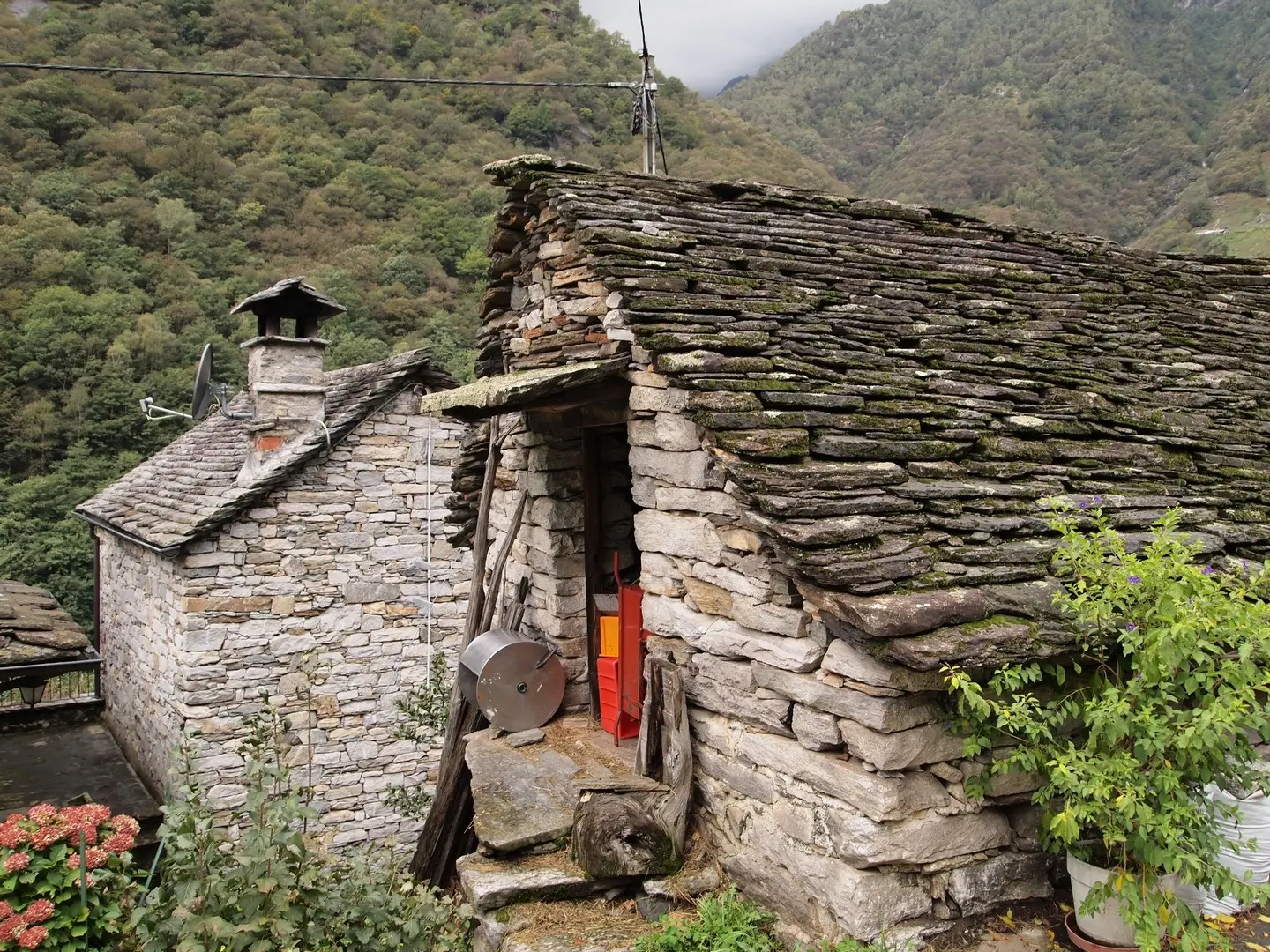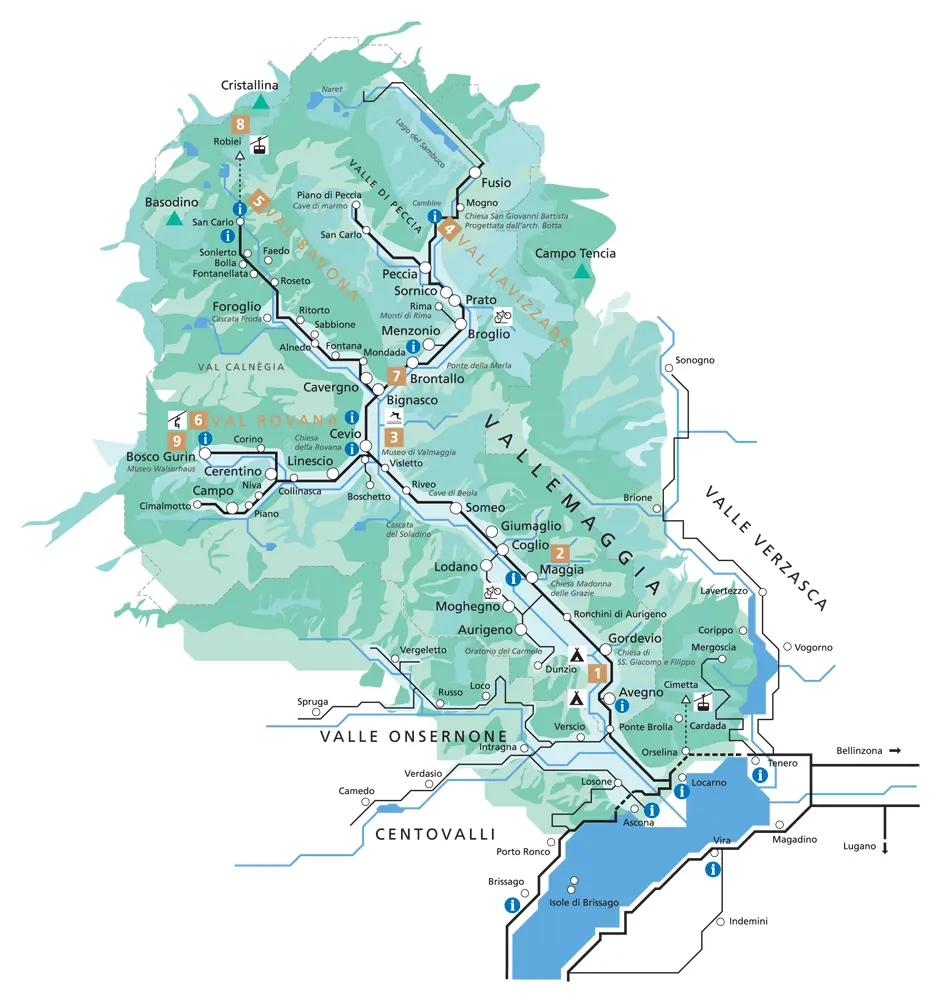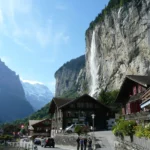Last Updated on 11/09/2023
Locarno has three picturesque valleys – Verzasca Valley, Centovalli and Maggia. The first two are especially popular, but that doesn’t mean the latter is less worth visiting.
In this post about beautiful Verzasca valley with picturesque villages.
More about Locarno and Ascona
Maggia Valley , Centovalli Railway
Lake Lugano attractions map
Ticino attractions map. Locarno, Bellinzona and valleys
Ticino guest cards and public transport Ticino
Lake Lugano. 3. Morcote, Caslano
Lake Lugano. 2. Lugano, Gandria, Melide, Carona
5 best viewpoints of Lake Lugano
Lake Maggiore Attractions of Italian part
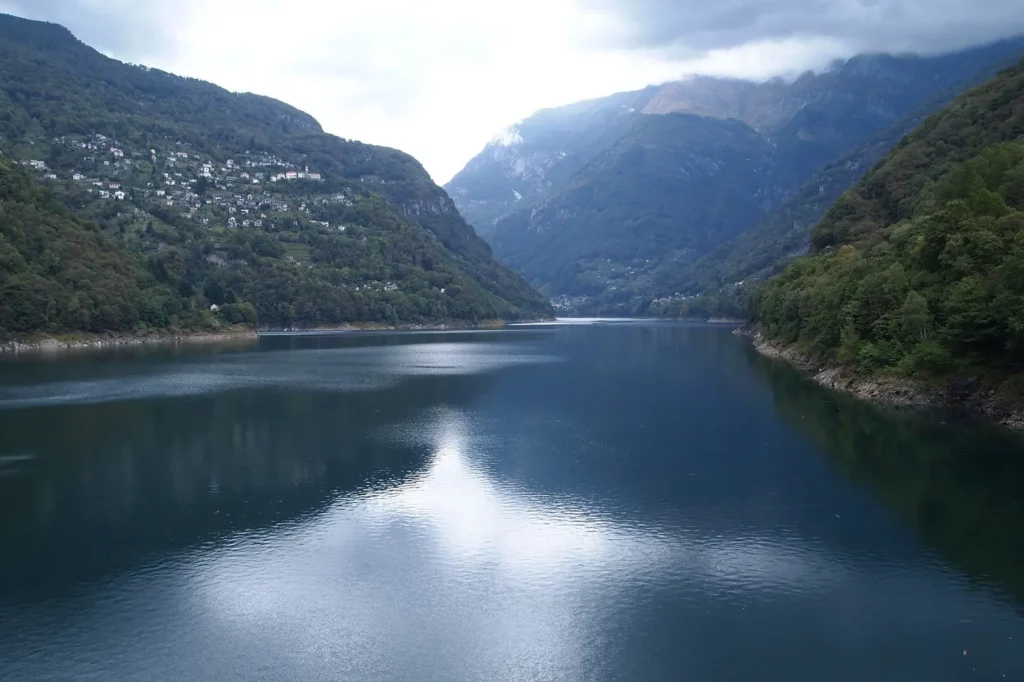
How to get to Verzasca Valley
The Verzasca Valley can be reached by bus 321 from the train station in Locarno or from Tenero.
Bus 312 from Locarno runs to the village of Mergoscia, which is located above the reservoir.
The bus runs along the valley in the season quite often. Therefore, you can not only get to the main point – the village of Lavertezzo. But also see other very beautiful villages, moving between them by bus or on foot.
If you are driving, do not forget to stock up on francs-coins, as parking is paid (1-2 francs per hour).
You can enlarge the map.

Contra Dam
Let’s start from lake Maggiore and go upward. Note that if you want to walk (travel by bus), then it is better to start the other way around, from the farthest point on your route.
The first obligatory stop is after a steep serpentine road at the dam on Verzasca. The dam was built in the middle of the last century. Its height is 220 m. Those who wish can fly almost all these meters tied to a rope and feel like Bond – the dam was noted in the Bond film.

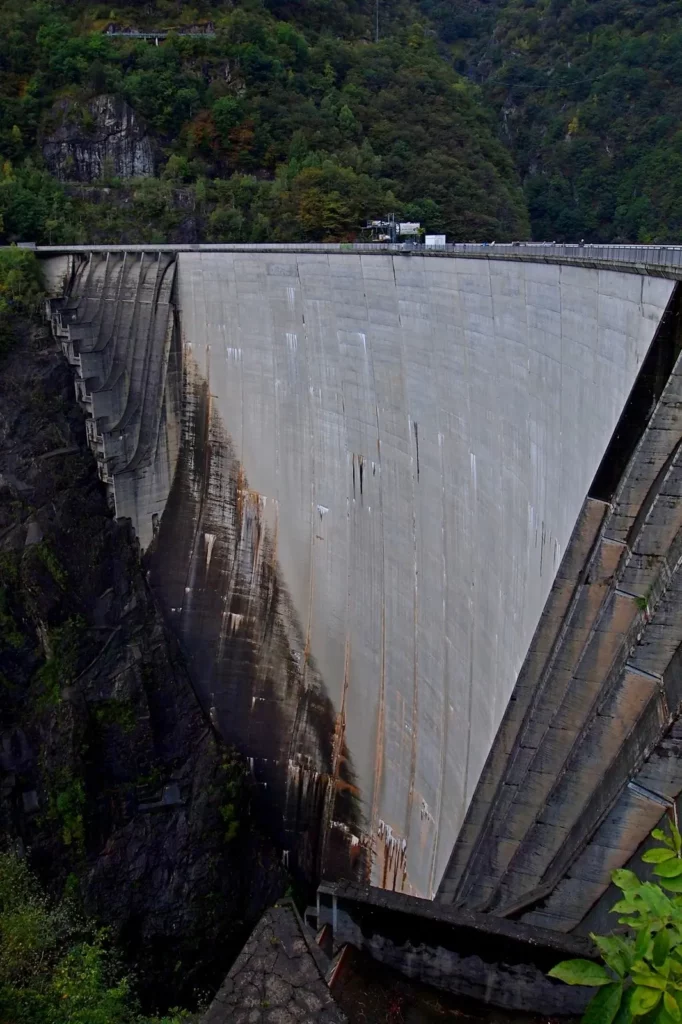

View to Maggiore lake
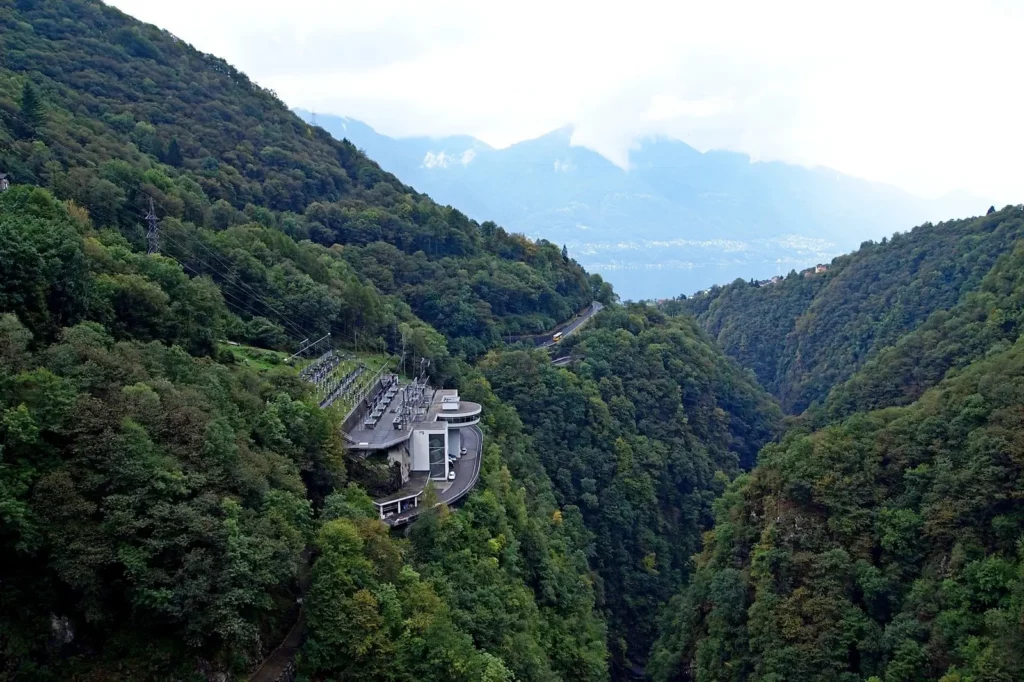
Are you ready?


But Bond could!
The dam forms a blue lake, which is also called Lake Vogorno (Lago di Vogorno) after the village.
You can see the reservoir from above from the village of Mergoscia (on foot or by bus 312 from Locarno) or Odro (on foot from Vogorno).

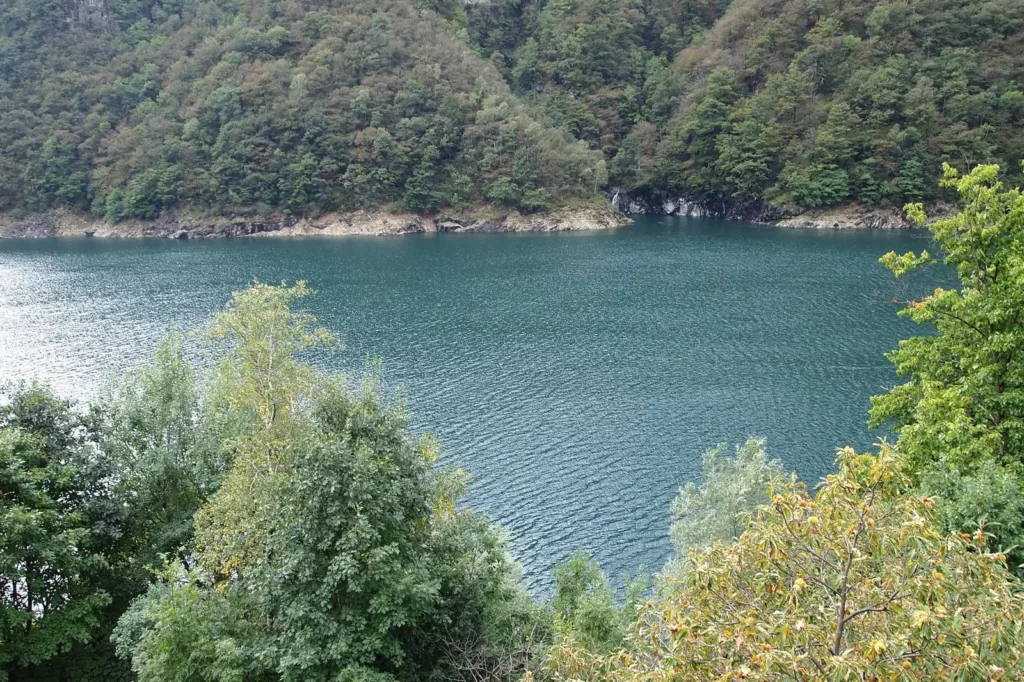
Corippo
Our next stop is the village of Vogorno. In general, the plans were for Corippo on the opposite slope. But the rain somehow doesn’t match to steep climb, so we were satisfied with Vogorno and San Bartolomeo.
To get to Corippo, take the bus to the next stop, Brivio di Corippo, cross the bridge and go up to the village.
By car – don’t miss the turn to the bridge. However, parking spaces are scarce and inconvenient. In Vogorno, it is also not clear how to park, because all parking lots are reserved for restaurants or private.
Corippo was before 2020 the smallest independent municipal unit in Switzerland. As of 2011, only 12 people live here, then only 9. But inspite of that they had a mayor and city concil with 3 members. After many years of independity Copippo became 2020 a part of big municipality with other villages nearby.
It was first mentioned in documents in 1224. The village was recognized as a historical heritage and is protected as a monument. Particularly valued in the appearance of the village is its architectonics – a harmonious combination of all parts. And students of architecture faculties come here.
You can see its photos on the website of the village (https://www.fondazionecorippo.ch/de/). I can only show the photos from San Bartolomeo.

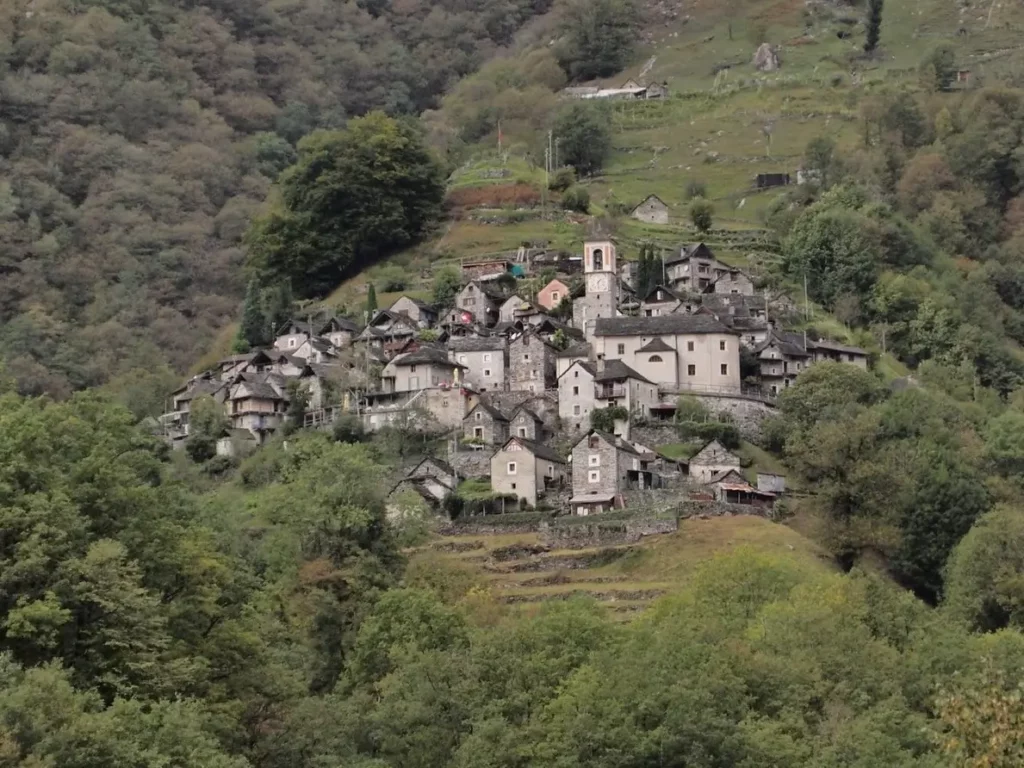
Corippo is a conserved museum village. In 1975, it was recognized by the European Architecture Congress as an exemplary model for the preservation of historical monuments. And her condition is supported by a few residents.
In contrast, Vogorno and the nearby village of San Bartolomeo are bustling with life. There are satellite on the old houses, dogs barking in the courtyards, and a stork was suspended above one window.
Vogorno, San Bartolomeo, Odro
In Vogorno itself and San Bartolomeo, there are also many stone houses like in Corippo, although, perhaps, they look less lonely, romantic and more adapted for life. On a narrow path you can go down from one street to another and it is not clear where the public area ends and someone’s garden begins, because there are no fences there.
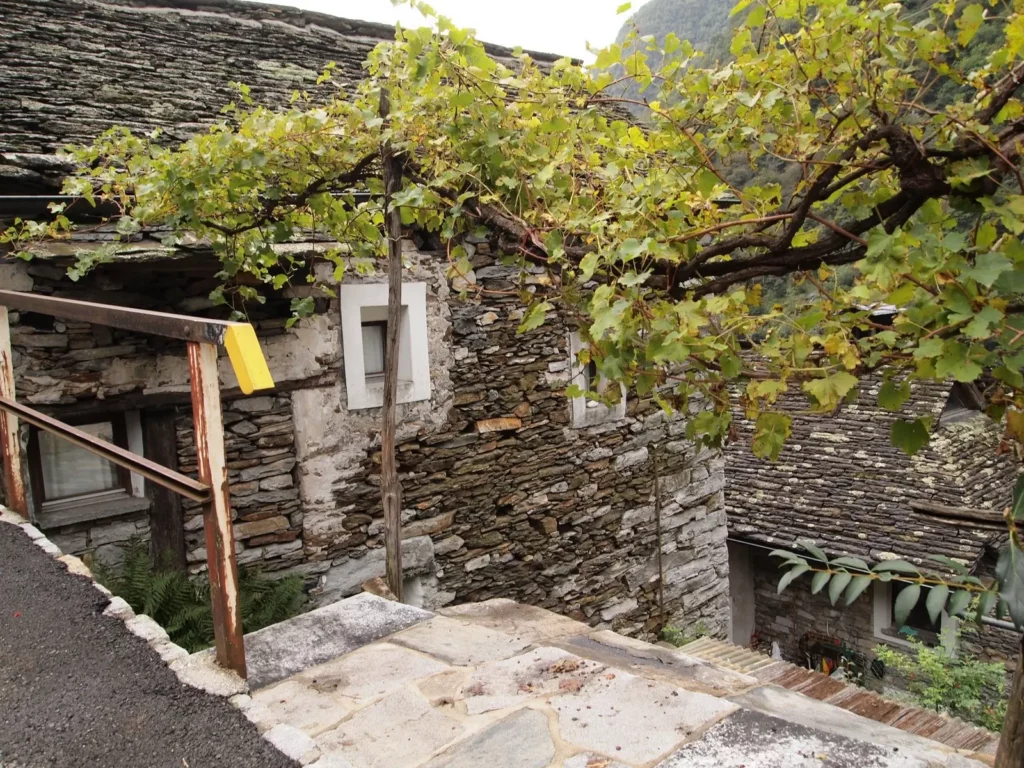
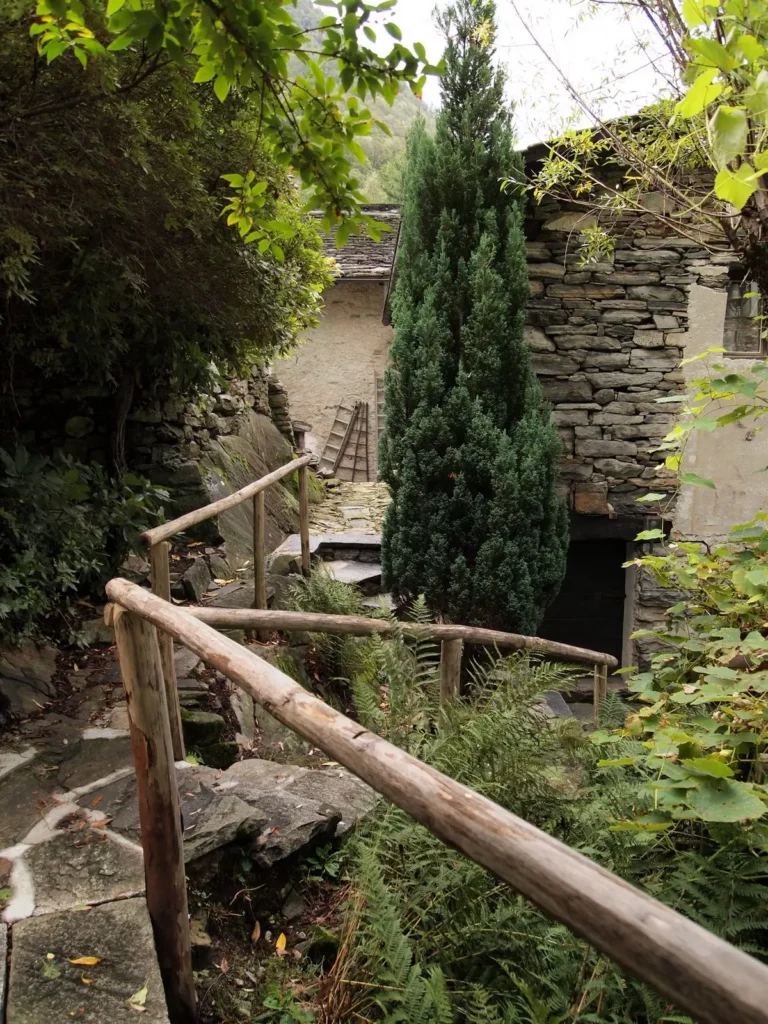
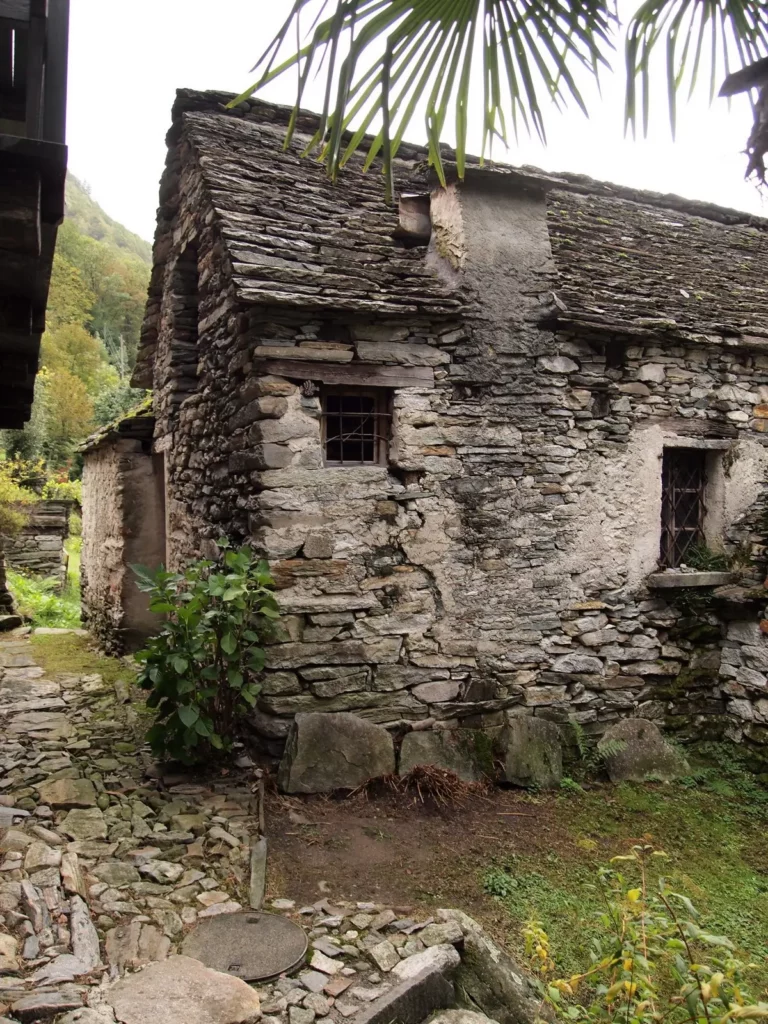

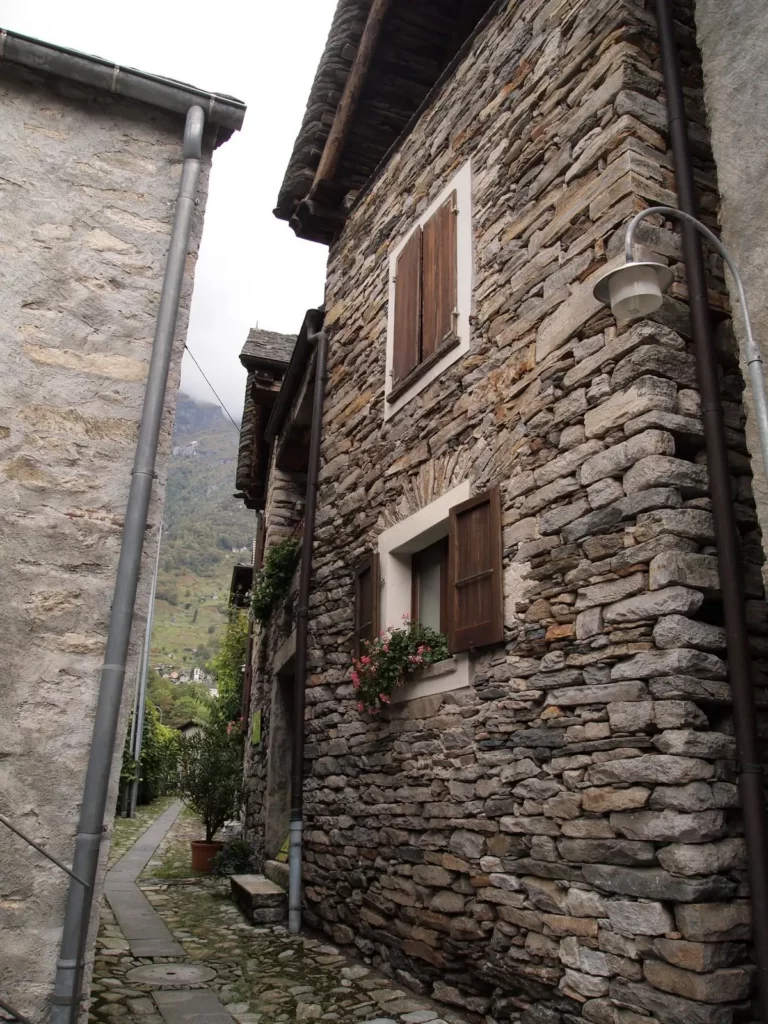
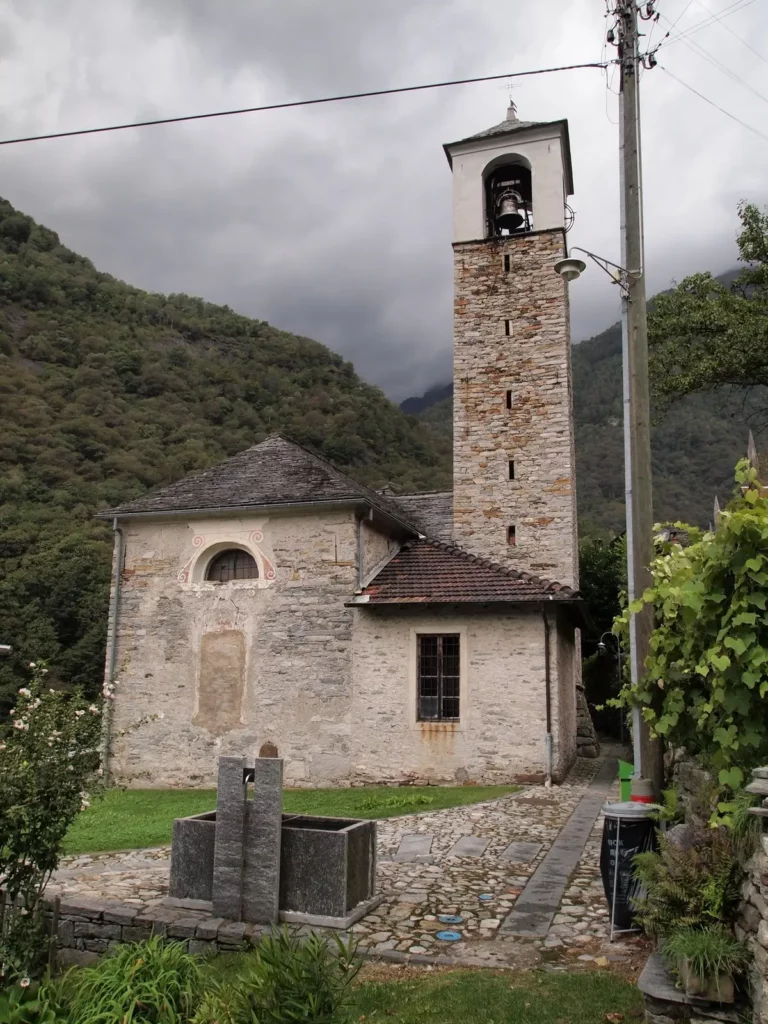
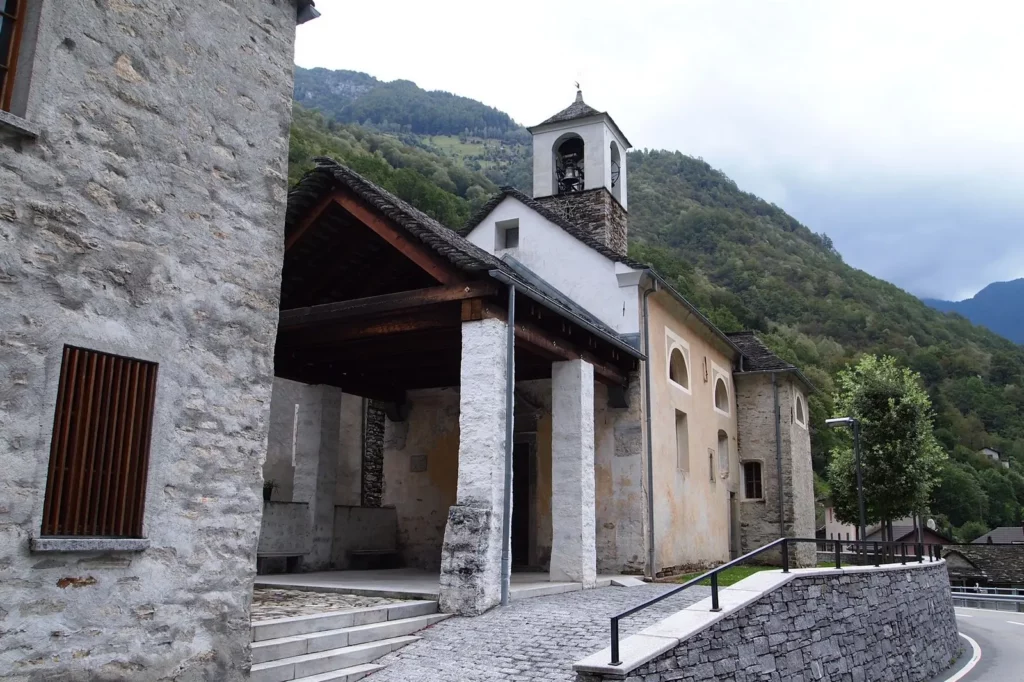
From Vogorno you can climb to the village of Odro. The trail starts in the center of Vogorno, where the bus stops, and it is suggested to leave the cars there (parking around the bend after the Pizzo Vogorno restaurant).
The ascent with an altitude difference of about 600 m goes along a well-equipped trail and takes one and a half to two hours. Odro is home to a small ethnographic museum and offers excellent views of the Vogorno reservoir and Lake Maggiore from above.
Another option for a mountain walk: climb the Bardüghe cable car (60 francs for a group of up to 4 people, you must inform in advance about your desire to go up by phone) to an altitude of 1600 m, and then go down through Odro. The cable car is located a little further than San Bartolomeo, it has its own parking.
The water in the reservoir is emerald green, although Verzasca, muddy after rain, flows into it. In the photo – a reservoir near Vogorno.
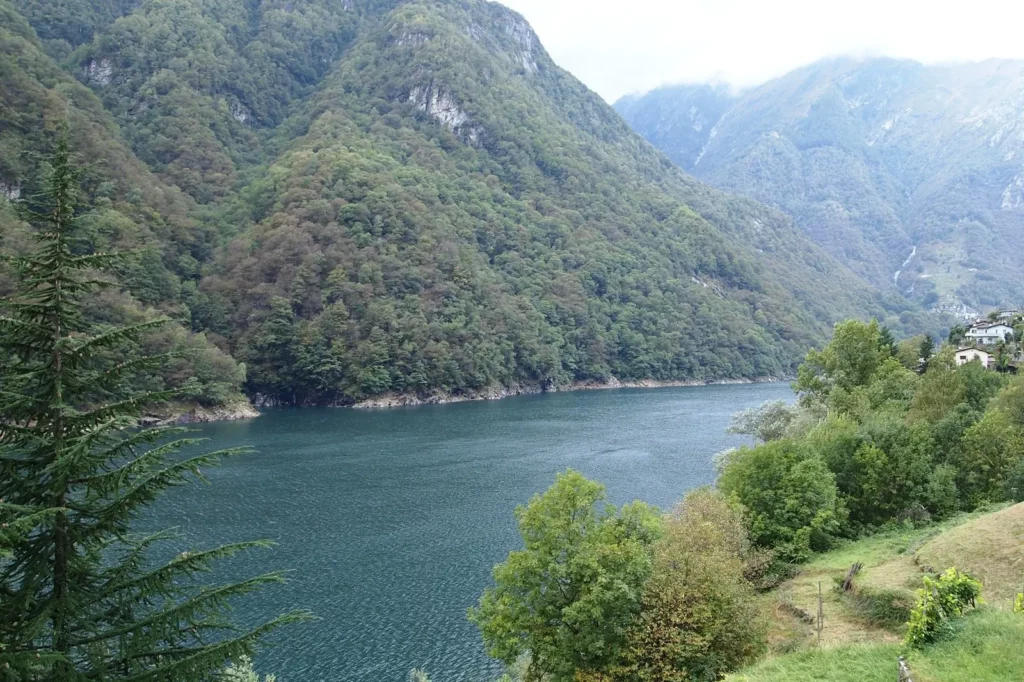

The church in San Bartolomeo is the oldest in the valley, built in 1234. It has preserved Byzantine frescoes from the early 13th century. Unfortunately, we found the church closed and could not photograph them.

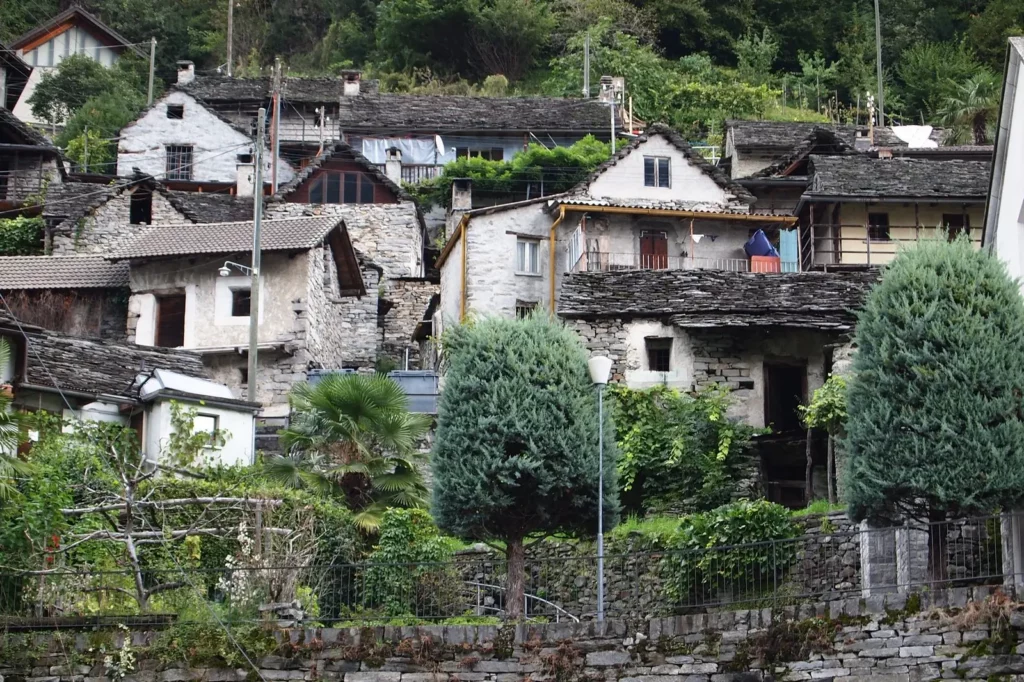
Lavertezzo
Lavertezzo is the main point for bus excursions in the valley. This is a rather large settlement (over a thousand people). In the past, people lived here only in summer, going down in winter.
A popular photographic object is the Ponte dei Salti – double-arch bridge, sometimes also mistakenly called Roman. In fact, the construction of the bridge dates back to the 17th century.
The baroque church in the village was built in the 18th century. There are many bathers and divers below the bridge in good weather, so it is better to arrive early during the season. Unfortunately, we found only a mountain-raging version of the river instead of the emerald-transparent, as most people see it.
Verzasca on the way to Lavertezzo.

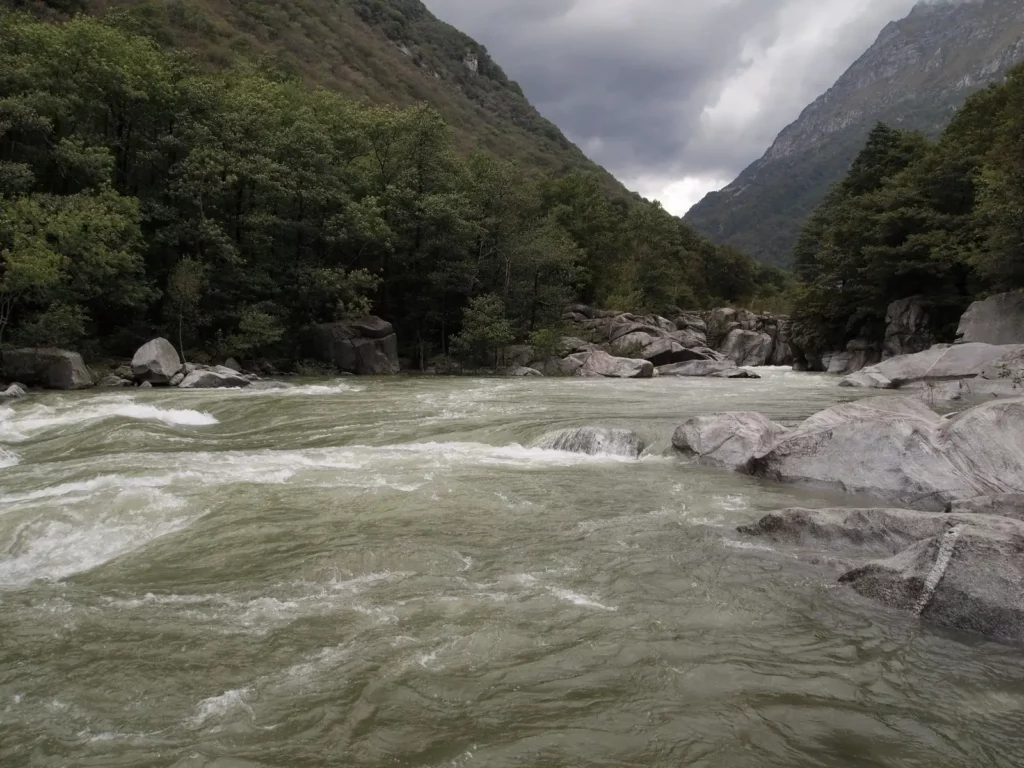

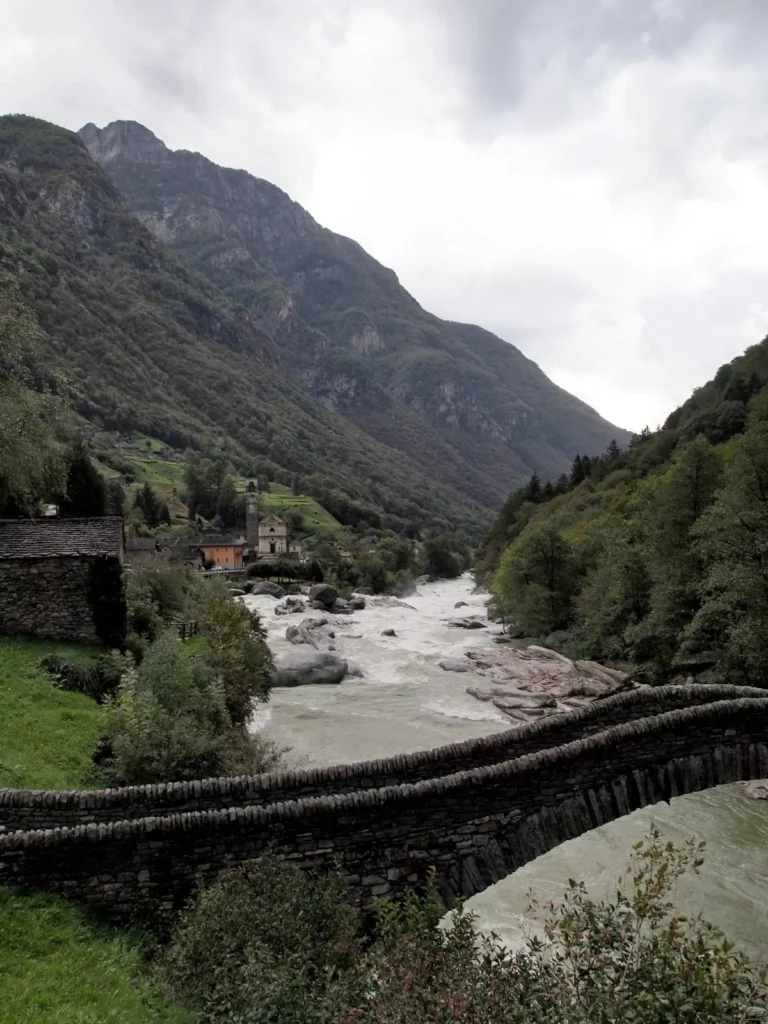
Lavertezzo

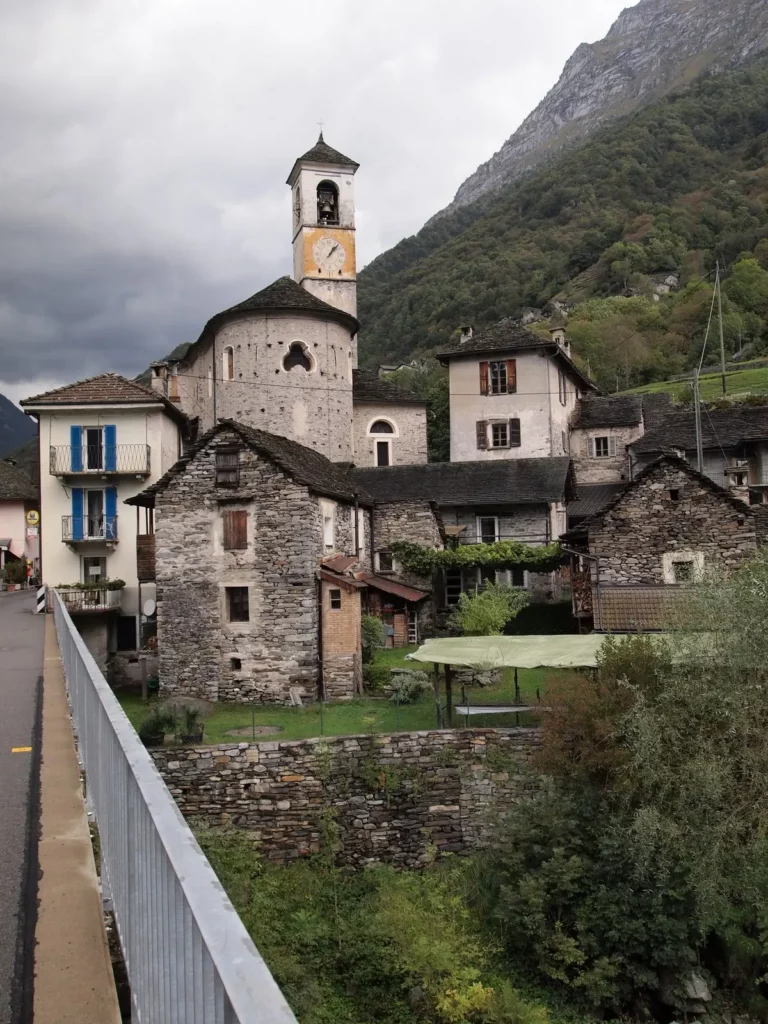
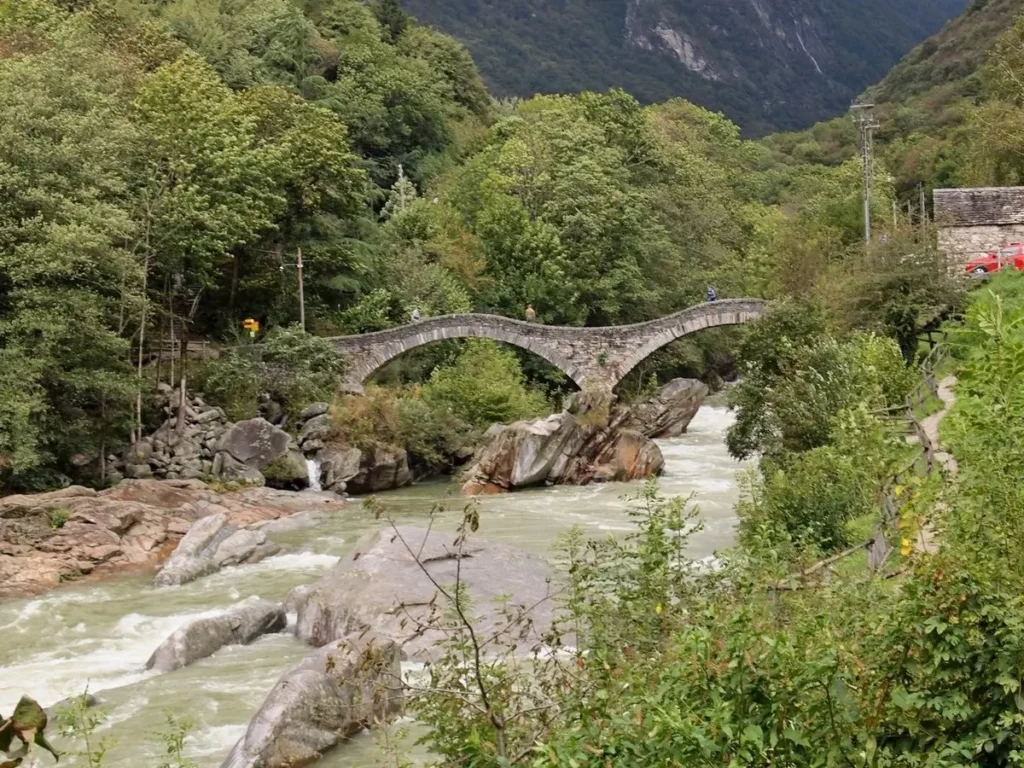
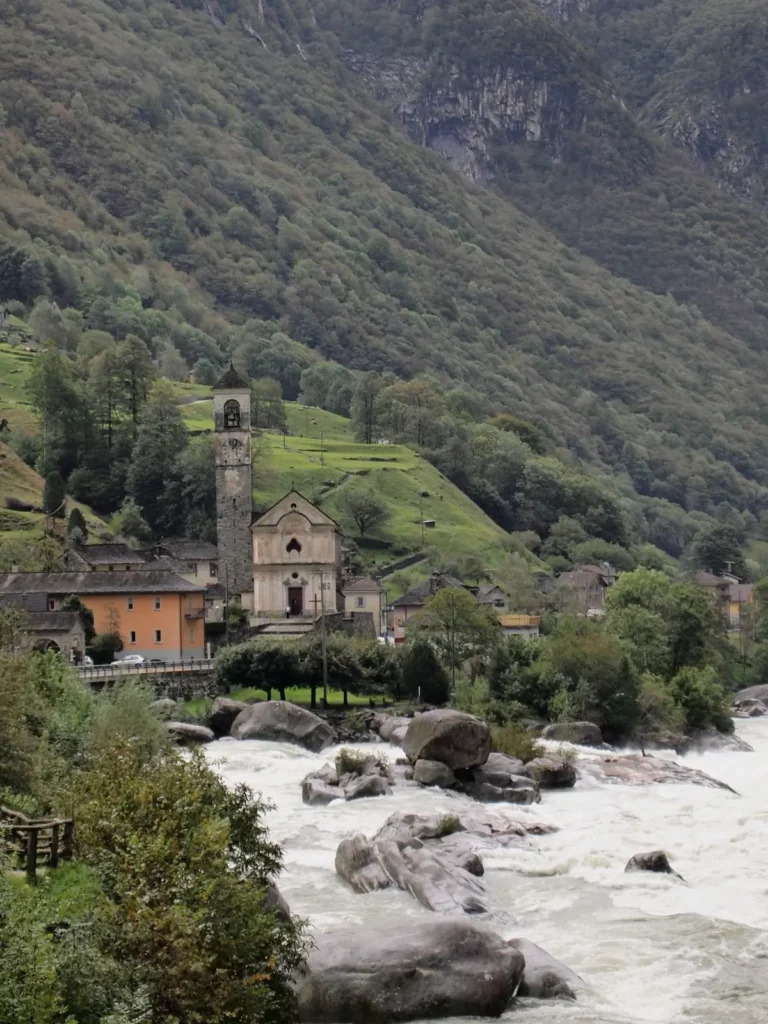
A small waterfall near the bridge.


Brione, Frasco, Sonogno
People get to these villages much less often.
In Brione, you can see the church of Santa Maria Assunta (preserved the remains of a chapel of the 13th century, expanded in the 17th century) with frescoes from 1350 by an artist from the school of Giotto and a small castle Castello Marcacci from the 18th century. The walk from Brione to Lavertezzo is quite popular.
In Frasco, a small waterfall on the river Efra and a mill can be interesting, which can be seen for 2 francs. Part of this village was destroyed by an avalanche in the middle of the 20th century.
Sonogno is the last village in the valley. Here is the valley museum and waterfall. As in other villages of the gorge, there are stone houses. And in addition, there is a village oven, in which they used to bake bread for the whole village. Now they use it occasionally, mainly for holidays. At Casa della Lana, local craftsmen sell wool products (9.00-12.00, 13.00-17.00, on weekdays). The wool is dyed with natural dyes.
Other posts about Ticino – #Ticino.
Next – Centovalli and Maggia Valley.
Do you enjoy the site without cookies? This means that I work for you at my own expense.
Perhaps you would like to support my work here.
Or change your cookie settings here. I don’t use personalized ads

